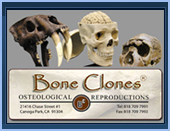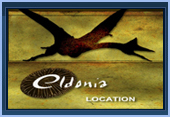일반명 : 녹조류화석(fossil algae)
학명 : Margaretia dorus
Age: Middle Cambrian
Size (25.4mm=1 inch): 180mm X 155mm
Fossil Site: Wheeler Shale, Millard County, Utah
The first fossils of multicellular green algae appear in the Cambrian strata of the early Paleozoic Era. Margaretia as shown here was a thin, frond-like green, carbonaceous algae resembling modern kelp. Complete algal fossils, identified as Yuknessia simplex and Margaretia dorus as seen here have also been found in the Burgess shale of Canada; both genus have been classified as Chlorophytes, a distinct branch of green algae from the Streptophytes that eventually gave rise to the land plants. This taxon awaits further study.
Although Briggs book (see reference below) shows up to three fronds growing from the base, in Utah I've only seen single and double fronds attached to the base. A network of small oval holes perforates the fronds. A few scientists believe Margaretia were a type of sponge or alcyonarian coral. Margaretia are one of the more common megascopic algae in the Wheeler and Marjum Formations, but they are usually poorly preserved and rarely found in the size and having the contrast of this specimen.
Actually, together with filamentous cyanobacteria (commonly called blue-green algae), algae like Margaretia built large reef systems that not only supported Cambrian marine life, but photosynthetically augmented atmospheric oxygen levels thus further driving the amazing eukaryotic diversification known as the Cambrian Explosion.
This is both a large and detailed specimen. Note the picture of a section of the specimen showing a ruffled, sometimes spiny edge, a detail that usually is not perserved.
Reference: The Fossils of the Burgess Shale by D. E. Briggs, et al.












































 수량을 선택해주세요.
수량을 선택해주세요.





































